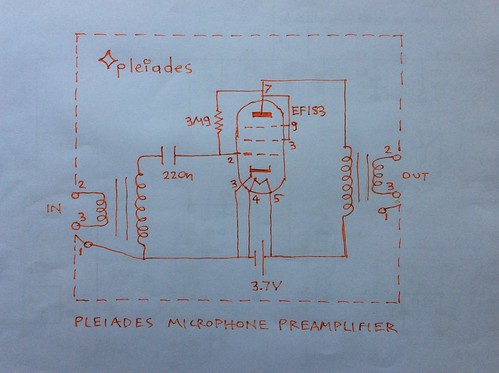This is a brilliant paper on electron tube noise sources:
A study of noise in vacuum tubes and attached circuits - F. B. Llewellyn
http://www.keith-snook.info/Stuff-you-should-read/Frederick%20Britton%20Llewellyn%20-%20Noise%20in%20Vacuum%20Tubes%20and%20Attached%20Circuits.pdf
Hundred of years ahead if it's time.
It even discusses such topics as:
What is the effective temperature as regards production of thermal noise of the internal plate resistance of a vacuum tube?!!!
Georg Neumann before designing the legendary U47 must have read all these classic papers on electron tube noise.
By reading this paper one realizes the importance of low temperature for all electrodes. The use of minimum heater temperature for given anode voltage until shot noise becomes zero. The importance of minimum ions and secondary emission electrons created. The importance of not a high negative grid voltage so as not to attract positive ions near the grid and space charge. Our grandfathers were hundreds of years ahead of their time.
Perhaps papers such as this influenced Georg Neumann to underheat the VF14 electron tube and use a low anode voltage.
When by chance the Pleiades V6 amplifier was made, operating employing anode or Pleiades bias, just 4V at the anode, and corresponding very small heater voltage or cathode temperature it was striking how low noise the circuit behaved. For example if a link was connected between ground and grid coupling capacitor the noise was so low that the amplifier could be mistaken to be off.
This paper perhaps explain why this happens.
Reference:
The schematic of Pleiadss V6 microphone booster

No comments:
Post a Comment